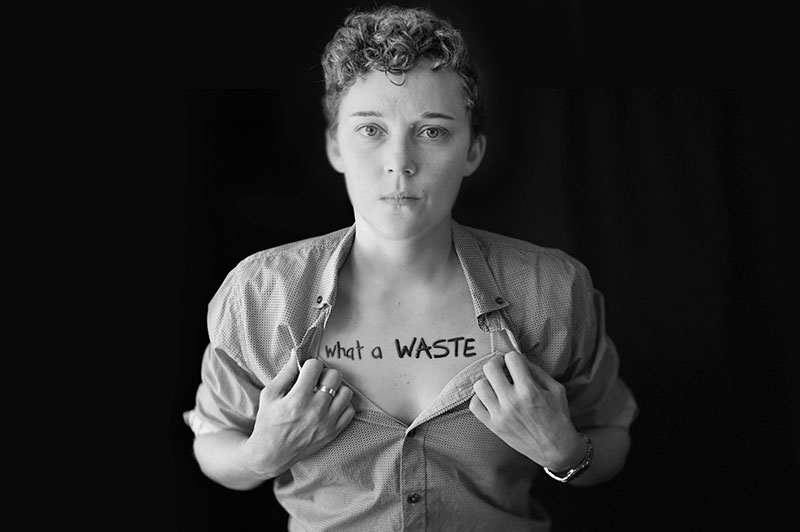
That’s What She Said strikes a curious, lingering chord; an exhibition of work by eight women artists from across Australia, curated by an emerging female curator, it opened to coincide with a broader WOW Women of the World Festival. This was the third WOW festival hosted by the Godinymayin Yijard Rivers Arts and Culture Centre (GYRACC) in Katherine, NT, and its first dedicated to the response of contemporary artists.
The first note of curiosity was the way the GYRACC’s main gallery was concealed: a title wall obscured the entrance-foyer view of the space, while dark grey walls contributed to making the gallery somewhat tomb- or cave-like. The colour, advised curator Sophie Rayner, was from the leftover paint used for a wall in the gallery’s adjoining shop. In another nod to practicality, Rayner added that she needed dark walls to privilege an aptly placed and titled bright-white neon text piece by Jayne Dyer, She (2010).
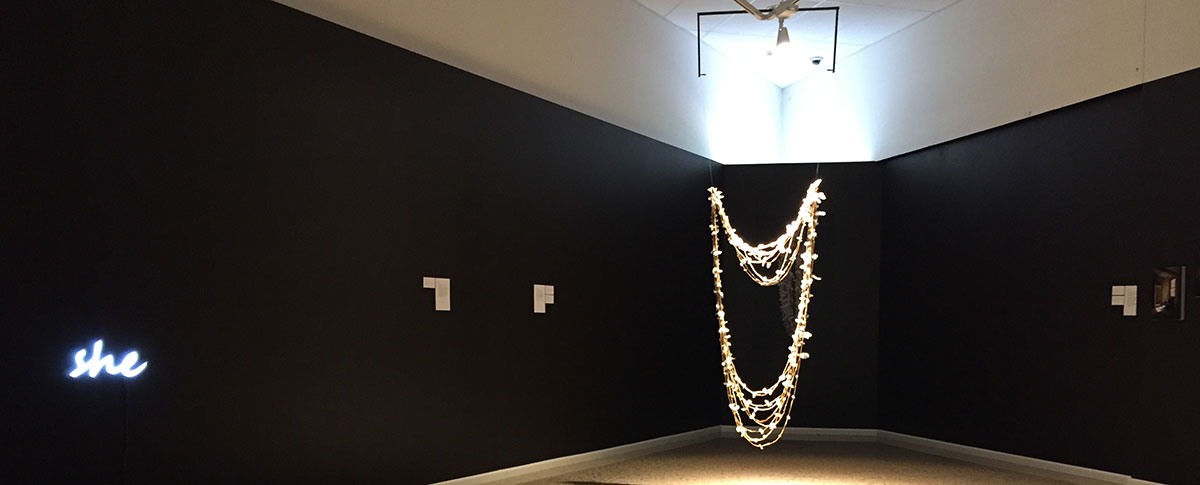
She brilliantly evokes the exhibition’s female ethos as captured in the curious title, That’s What She Said, an expression which seems to reinforce a sense of “her-story” rather than “history” but which also seems rather casual and prosaic. It’s an expression which Rayner identifies with as Gen-Y speak, inserted into the conversation by “young-at-university” types as a kind of mock-irony, perhaps to diffuse its otherwise popular double-entendre. It encapsulates Rayner’s dilemma as a Gen-Y curator – “too young to have seen the first or second wave of feminism roll past, but old enough to know every word (and dance move) to each Spice Girls’ girl-power anthem, and think in contemporary western society the F-word (*Feminism) is outdated.” What does an all-women exhibition say or mean to someone who is “beyond boy/girl stereotypes” and whose vision of an inclusive future accommodates “hairy armpits and tiaras”?[1]
As Rayner makes clear in her curatorial essay, the exhibition doesn’t need to say or do anything in particular but “simply be what it is: a show of practising female artists, communicating whatever they want to whichever audience they please.” And yet, through the work, the exhibition does say and do particular things. Some of the work is more overt in its female subjectivity as with She or Therese Ritchie’s photographic portrait of Joni from her recent exhibition of local (Darwin) lesbian portraits (But you’re not ugly), or Kaylene Whiskey’s Fighting Diabetes painting which depicts a conversation between Wonder Woman and pop singer Rihanna.
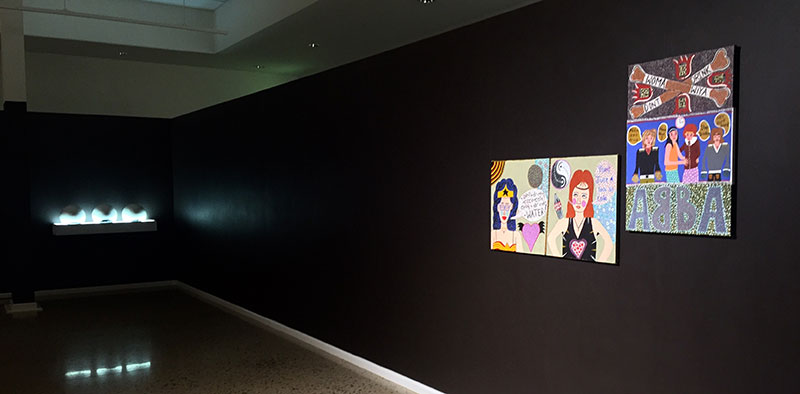
Hobart-based Fiona Fraser’s Flow Chart series and related Flesh Estuaries work (1999) is an internalised, medical map of her experience of ovarian cancer, and of reclaiming her body in the process. The significance of the work lies more in this provenance and the importance of its health message than its realisation as art. The work still carries clear formal presence in the exhibition’s overall hang – its row of petri dishes balancing the row of round white helmets for Caitlin Franzmann’s soundscape Dissolve (2013) in one corner and Maree Clarke’s monumental River Reed Necklace (2015) in the other.
Along with its national scope which goes international, given Dyer’s places of practice (Lisboa (Lisbon)/Sydney), the exhibition successfully draws on a mix of emerging to established voices that cross generations: from work made almost 20 years ago to recent art school graduating work, with the inclusion of the intimate trompe-l’oeil interiors of Canberra painter Kirrily Humphries. There could have been more work from some of the artists but the relatively spare hang is also appealing and quirky, as is the overall selection of work/objects which play with shifts in scale and medium as much as their thematic riffs.
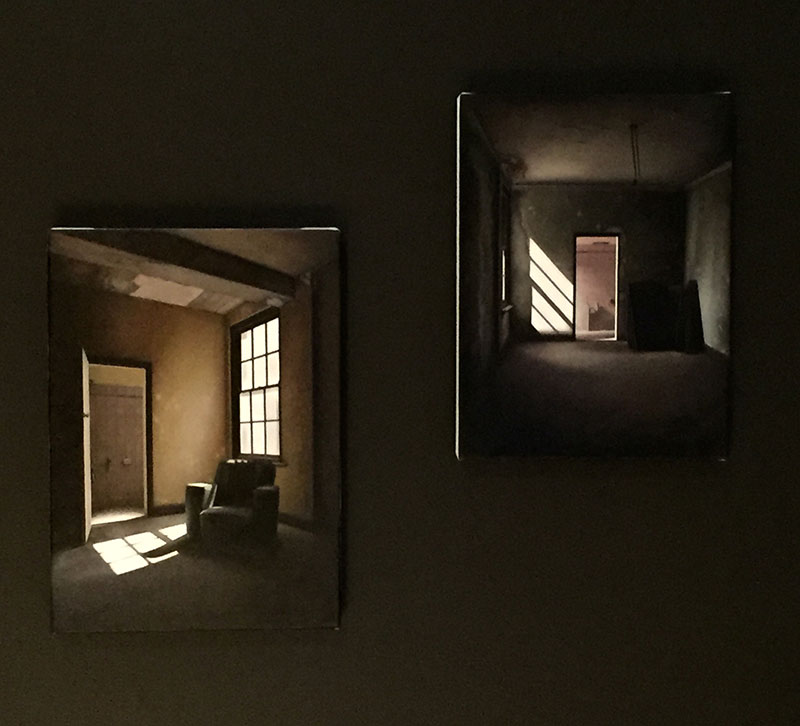
GYRACC regards That’s What She Said as one of its more challenging, contemporary exhibitions with Franzmann’s sound-based work and the conceptual albeit comic dimensions of Perth artist Tanya Lee’s film Personal Space (2013). According to Rayner, Katherine audiences are donning Franzmann’s helmets and tuning into her soundscape but “the reaction here is more in humour than a meditative state (which is Caitlin’s intent)”. Rayner is unfazed as “it has people actively completing/participating in the installation, people who would have never been to the Museum of Contemporary Art in Sydney [where this work was previously shown] or any contemporary art centre for that matter.” [2]
Rayner makes a convincing mark with this debut curatorial exhibition at GYRACC following her post-postgraduate studies in curatorship. She may be one of few curators in the country who has also worked as a jillaroo, which is a perfect fit for Katherine and GYRACC where the curator needs to be very hands-on. The exhibition is a refreshing lesson in restraint and shows a curator mindful of her immediate audience, of the need to give the work and its ideas room to mingle and breathe. This comes through in the understated tone of Rayner’s curatorial essay – not wanting to be heavy-handed in holding work to a WOW/womanly theme – as well as in the gallery hang.
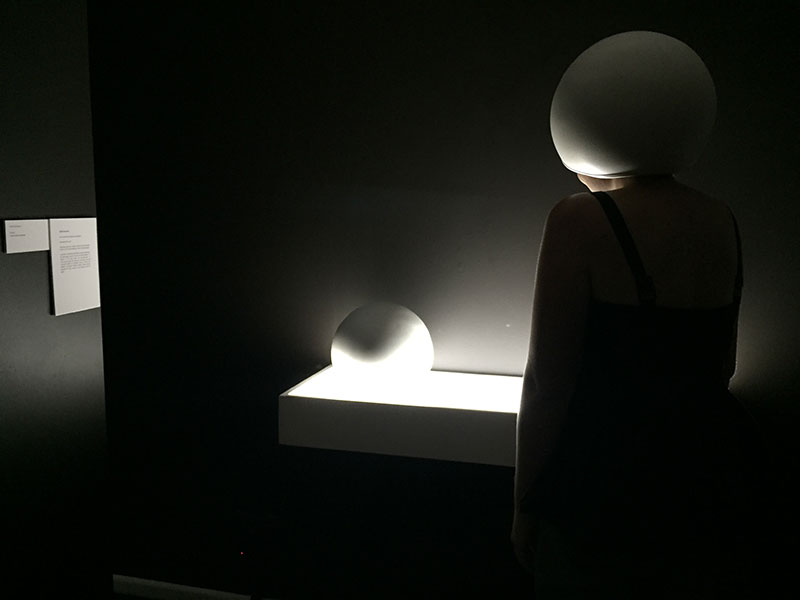
Footnotes

